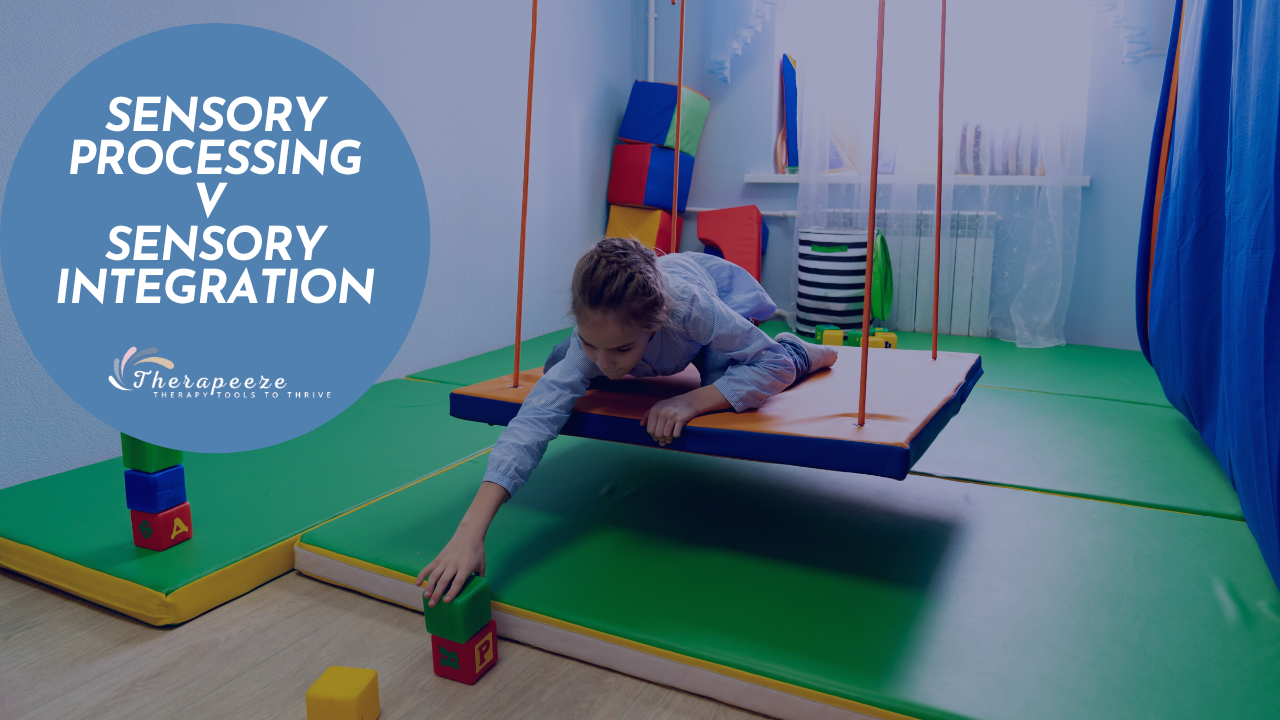
Sensory Processing V Sensory Integration
Oct 27, 2022What is sensory integration?
The term “sensory integration” refers to the processing, integration, and organisation of sensory information from the body and the environment. This means how we experience, interpret and react to (or ignore) information coming from our senses.
Sensory integration is important in all the things that we need to do on a daily basis, such as getting dressed, eating, moving around, socialising, learning and working.
Sensory information is received from our senses, which include:
• Sight (vision)
• Hearing (auditory system)
• Touch (tactile system)
• Taste (gustatory system)
• Smell (olfactory system)
• Proprioception (senses of body awareness and position)
• Vestibular (awareness of movement, balance, and coordination)
• Interoception (our internal sensory system that tells us what is happening inside our body, for example, hunger, needing the toilet, fatigue, emotions, etc)
For most of us, the development of sensory integration occurs when we are young as part of our normal development and in the things we do such as rolling, crawling, walking and in play; for others, sensory integration is less well developed.
Our understanding of sensory integration was initially developed in the late 60s and 70s by Dr A Jean Ayres, an occupational therapist and psychologist with an understanding of neuroscience, working in the USA. Ayres defined sensory integration as:
“The neurological process that organises sensation from one’s own body and from the environment and makes it possible to use the body effectively with the environment.” (1972)
What is the difference between sensory integration and sensory processing?
The terms “sensory integration” and “sensory processing” both refer to the processes in the brain that allow us to take the signals from our senses, make sense of those signals and respond appropriately.
Therapists tend to use a particular term depending on where they trained. Sensory processing is more commonly used in relation to what parents/professionals observe in children/young people, where there is a behavioural response to the environment. This therefore, leads to taking action such as adapting the environment with equipment in order to support the individuals nervous system.
Sensory Integration is where therapists focus on neuroplasticity in the brain to improve everyday skills, therefore, basically re-wiring the brain. So I always explain that there is sensory processing regarding environmental adaptations but the integration goes one step further and works directly with the nervous system to improve function on a day to day basis.
What do sensory integration and sensory processing difficulties look like?
What happens if the signals coming from our senses are too weak? Or too strong? Or if our brain over or under reacts to the signals? Or if the brain can’t make sense of those signals? The individual will experience sensory integration difficulties and this may be evident in their behaviour. Some individuals may experience the sensory inputs as overwhelming and upsetting, leading to ‘sensory overload’. Individuals may be over sensitive to sensory input, under sensitive, or both.
It’s common for all of us to occasionally feel under or over sensitive to sensory inputs; for example, music or bright lights may feel too much if you have a headache; you can feel uncoordinated or find it hard to focus if you are tired. But these feelings are temporary and wouldn't normally affect your day-to-day functioning in the long-term. Sensory integration or sensory processing difficulties are long-term and have a big impact on everyday life and learning. But with professional advice and, if appropriate, therapy, much can be done to support improvements in a person’s daily functioning.
Some individuals may have difficulty processing input from one particular sense (eg, visual processing), whereas other individuals may experience difficulty integrating inputs from more than one sensory system. Note that sensory integration difficulties are different from sensory impairments such as hearing loss, although sometimes the two result in similar behaviours. For example, an individual with perfect hearing can find it difficult to follow conversations if they have difficulties processing the incoming auditory signals.
What is sensory integration therapy?
Sensory integration therapy (or SI interventions) include structured exposure to sensory input, movement therapy, balance treatments, carefully designed and customised physical activities and accommodations (eg, changes to the environment or routine). That is why at Therapeeze we work work with the client, their family, carers, school, other allied health professionals or employer (as appropriate) to create a ‘sensory lifestyle (diet)’ for that specific client. A sensory lifestyle is a recommended suite of activities and accommodations (that can be carried out both in therapy sessions and at home or school) to help give that individual the sensory input they need.
Are you interested in exploring and learning more about your child’s nervous system?

